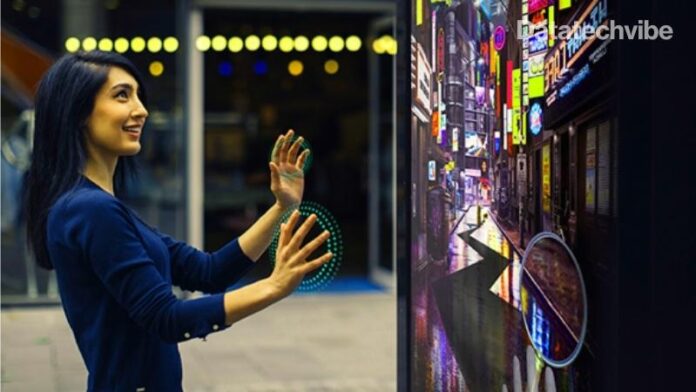Creating a program that runs without requiring a person to touch a screen is one thing, but what about creating one that won’t require touching anything at all?
With the ongoing COVID-19 crisis, everyone is conscious of social distancing. Voice and gesture capabilities can come in handy to improve our everyday quality of life as people are trying not to touch the Bank ATMs, self-checking screens or self-order screens in restaurants. Gesture control can help in avoiding unnecessary physical contact.
Post-pandemic, when everything started falling in place, airlines and airports began implementing modern solutions to minimise risks. As the world adapts to climate change, businesses are introducing ways to help with biosecurity efforts.
Is it more than just hand waving or a new era of touchless technology?
Touchscreens are on the way out. For all the traction they gained through the last few years, all signs indicate that public trust in high-traffic touch points would be low for the foreseeable future. Conversely, the need for dynamic, interactive experiences to keep consumers interested is not decreasing. Taking the touch out of touchpoints – is a challenge facing all brands.
Creating a program that runs without requiring a person to touch a screen is one thing, but what about creating one that won’t require touching anything at all? It can be done with some necessary hardware to which most companies will already have access or make a little investment. Gesture control is a readily available option. The far-reaching implications of this technology can lead to interfaces that effortlessly translate sign language—also giving individuals combating physical challenges the ability to communicate with associates without the need for an interpreter.
For instance, Clay AIR – works with automotive, VR and AR firms on hand-tracking gesture recognition technology to provide hardware-agnostic solutions. Recently Renault announced a collaboration with Clay AIR to increase safety and add an extra layer of convenience for drivers. Clay AIR’s technology complements voice user interfaces, turning complex commands into quick and simple shortcuts. Also, gesture functions allow for multi-step interactions to take place with user-friendly gestures. Like you can say, the drivers can control Android Auto navigation through simple in-air movements.
Ultraleap has long been using touchless technologies with brands, venues and integrators to create engaging and safe touchless experiences. Their world-leading hand tracking and mid-air haptics technologies allow you to control and feel digital content with your bare hands without needing consumers to touch public displays. Towards the end of 2020, they launched an innovative application, TouchFree, that turns touchscreens into touchless interfaces.
In addition to this, for retailers and other service providers, the most immediate benefit can be seen in the ability to allow consumers to leave quick, unambiguous feedback about an experience. Like, a thumbs up or down to a screen upon exiting a store could enable you to take customers’ temperature and get real-time feedback. The most holistic system wouldn’t merely rely on computer vision to recognise standard gestures. Incorporating swipe control gestures into this kind of interface is the more robust solution. With an alternative like this, customers can swipe backwards and forward, up and down, to control the information visibly on a screen. And with gestures – such as thumbs up and down, customers can make selections.
For instance, imagine someone in an airport looking to order some refreshments but not wanting to disrupt the social distancing protocols necessary to keep everyone safe. The customer can go to a nearby kiosk and use a gesture control screen – featuring menu items, and by using gestures like thumbs up and thumbs down, the customer can finalise the menu. Then through QR codes or even an app, they can complete the purchase and have their order sent directly to their flight.
It’s time to adapt to intelligent systems and go touchless with mobile apps.
A standard push back against gesture control tech in public spaces is people not being as interested in making use of it for fear of looking stupid. One of the easiest ways to introduce these updates in public is through games. People are likely to do things that may seem fun in public, and such activities are always a success.
Another option is encouraging the public to use their smartphones as universal remotes that prevent large gatherings, eliminating the need for a high touchpoint area. It also eliminates the cumbersome task of needlessly downloading mobile apps, where the said service’s utilisation period is for a limited time.
To cater to the broader market, you can create a better experience by incorporating gesture and smartphone remorse manipulation into the same interface. Consumers want touchless interfaces: An Ultraleap survey of over 500 participants revealed changing perceptions of public touchscreens and touchless technology post-COVID-19.

What does the future look like?
There is no absolute answer to this question. Voice and gesture control applications are used in various fields. Today, we have adopted the new normal through social distancing, washing hands frequently, practising good hygiene, etc.
Featured Image courtesy: Ultraleap









